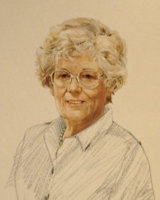Two items of interest to Dunnett readers in the last couple of weeks.
Dollys to be republished
It’s been announced that the Johnson Johnson series of mystery novels is to be republished under the original “Dolly and the…” titles. (Later note – they actually ended up using the later UK titles.)
They’ll be published by Farrago, an imprint of the Duckworth Book Group in the UK. No definite dates yet but you can check their website for any news at https://farragobooks.com/book-series/dolly
Dorothy’s Toy Theatre mentioned in a TV programme
The second item came to my attention when I was contacted by a TV researcher for BBC Studios/UKTV. They are are producing a tv series about a toy auctioneer in Teeside in the North East of England.
One of the featured types of toys is mini theatres and they’d had one come up for sale by Pollocks Victorian Theatre with Dorothy’s name attached to it. The researcher had found reference to it in this blog in one of the old newsletters from the year after Dorothy’s death when I’d listed the items from her house that were being sold at auction, and asked me if I had any more information about it or a photo of Dorothy they could use. The relevant entry in the post is as follows:
Toy Theatre. The first entertainments devised by Dorothy in her childhood and early adulthood centred on her beloved toy theatre. Initially using the characters and equipment supplied by toyshops, she graduated to designing and making her own sets, lighting and characters for entire productions, and latterly would divert her family with miniature performances of operettas such as ‘The Mikado'(with music from her 78rpm record collection – see below) complete with an interval during which she would serve refreshments appropriate to the fictional setting. This collection includes extensive sets and characters, preparatory sketches and production notes.
I confess I had almost forgotten about it but of course the recollection came back as soon as I re-read my own post. You can see photos of the item on the company’s website for as long as they leave it up there, and if it’s taken down I’ll ask permission to show them here.
The only part I find puzzling in their description is that it is dated as 1947, but by that time she would be already married to Alastair, so I think that is a mistake and it’s much more likely to be pre-war when she was a young teenager. The illustrations she created for the theatre sets are charming and stylish and show how talented an artist she was from an early age.
If anyone has access to UK TV channels the programme is likely to air in March 2022 on Yesterday Channel, but I’m told that the news page on the website linked above will have details when they are available.
